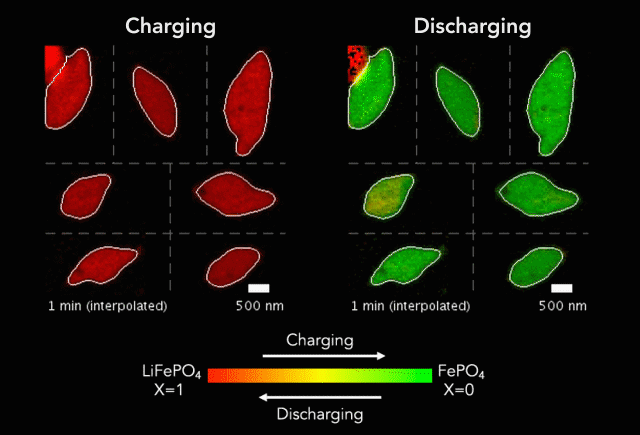Billions of minuscule particles densely packed into rechargeable lithium-ion battery electrodes play a pivotal role in storing and supplying energy. Visualizing this process through X-ray movies has provided valuable insights, but comprehending the intricate details of particle behavior has remained a challenge. Researchers faced a bottleneck in extracting nuanced information from these richly detailed movies until now.
A team of researchers from the Department of Energy’s SLAC National Accelerator Laboratory, Stanford University, MIT, and Toyota Research Institute introduced an innovative approach in which, using computer vision, they meticulously analyzed every pixel of the X-ray movies, unearthing unprecedented physical and chemical details of battery cycling that were previously elusive.
In this study, the researchers focused on lithium iron phosphate (LFP) particles, a crucial component of many lithium-ion batteries. These particles, coated with a thin carbon layer for enhanced electrical conductivity, reside in the positive electrodes. Transparent cell batteries were constructed, allowing observation of lithium-ion flow as the battery charged and discharged. Computer vision was employed to dissect 62 nanoscale X-ray movies, each frame containing approximately 490 pixels. Through this pixel-by-pixel analysis, the team trained a computational model, generating equations that accurately depicted lithium insertion reactions. Intriguingly, the movements of ions within the LFP particles aligned closely with Bazant’s computer simulations, unveiling a previously unseen level of detail.
One of the most significant revelations was that variations in the thickness of the carbon coating on an LFP particle directly influence the rate of lithium-ion flow. This finding offers a pathway towards more efficient charging and discharging of lithium-ion batteries. Importantly, the study underscores the critical role of the interface between the liquid electrolyte and solid electrode materials in governing battery processes. This insight prompts a shift in focus towards engineering this interface for enhanced battery performance.
This pioneering research marks a significant stride towards understanding the intricacies of lithium-ion battery function. Through the application of computer vision, the research team has unlocked a wealth of information that was previously inaccessible. By spotlighting the interface between electrolyte and electrode materials, the study directs attention toward a crucial area for battery optimization. This newfound knowledge not only promises advancements in battery technology but also opens doors to unraveling complex processes in other chemical and biological systems, transcending the realm of energy storage. The breakthrough, a result of six years of dedicated collaboration, holds immense promise for the future of energy storage technology.
Check out the Paper and Reference Article. All Credit For This Research Goes To the Researchers on This Project. Also, don’t forget to join our 31k+ ML SubReddit, 40k+ Facebook Community, Discord Channel, and Email Newsletter, where we share the latest AI research news, cool AI projects, and more.
If you like our work, you will love our newsletter..
We are also on WhatsApp. Join our AI Channel on Whatsapp..

Niharika is a Technical consulting intern at Marktechpost. She is a third year undergraduate, currently pursuing her B.Tech from Indian Institute of Technology(IIT), Kharagpur. She is a highly enthusiastic individual with a keen interest in Machine learning, Data science and AI and an avid reader of the latest developments in these fields.
Credit: Source link


Comments are closed.